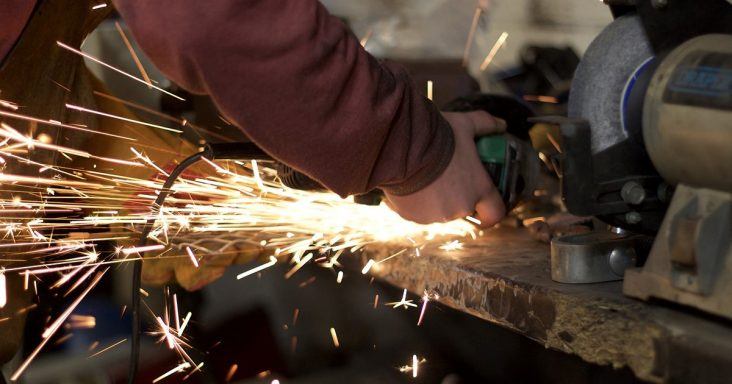Regional economy stuck in neutral amid trade wars, global slowdown
by October 1, 2019 1:40 pm 411 views

Economic growth across Arkansas and several other Midwest states remained flat in September as supply managers are increasingly looking for ways to navigate around U.S.-initiated trade wars that have negatively impacted business hiring and operations.
On Tuesday (Oct. 1), Creighton University’s Mid-America Business Conditions Index sank for the fifth time in the past six months and moved below growth neutral. The regional economic barometer, which ranges between 0 and 100, slumped to 49.1 from August’s 49.3. After 32 straight months of above growth neutral readings, the region’s overall index moved below 50.0 in August and September.
“For 2019, the Mid-America economy has been expanding at a pace well below that of the nation. The trade war and the global economic slowdown have cut regional growth to approximately two-thirds that of the U.S. Based on the last two months of surveys of manufacturing supply managers, both the U.S. and Mid-America economies, are likely to move even lower in the months ahead,” said Ernie Goss, director of Creighton University’s Economic Forecasting Group.
The Creighton Economic Forecasting Group has conducted the monthly survey of supply managers in nine states since 1994 to produce leading economic indicators of the Mid-America economy. States included in the survey are Arkansas, Iowa, Kansas, Minnesota, Missouri, Nebraska, North Dakota, Oklahoma and South Dakota.
The September score for Arkansas increased slightly to 48.3 from August’s 48.2 but remained below growth neutral. Components of the index were new orders at 44.2, production or sales at 49.6, delivery lead time at 56.5, inventories at 47.1, and employment at 44.3.
“Construction activity remained strong in (Arkansas). Both durable and nondurable manufacturers experienced solid growth over the past several months. However, new orders and hiring among manufacturers for the last two months signal slowing economic conditions in the state,” said Goss.
According to the Associated General Contractors of America (AGCA), construction spending in the blue-collar heavy sector edged up 0.1 percent in August from July but declined from year-ago levels, with divergent trends in residential and nonresidential categories.
In real dollars, construction spending totaled $1.287 trillion at a seasonally adjusted annual rate in August, a gain of 0.1 percent from the July rate but 1.9% less than the August 2018 rate, according to estimates from the U.S. Census Bureau released today. Year-to-date spending for January-August combined fell 2.3 percent from the year-ago total.
AGCA officials said that many contractors are reporting that staffing challenges are causing projects to take longer than expected, which may be holding down spending. They urged government officials to boost funding for career and technical education and pass comprehensive immigration reform to ease the shortage of construction workers that is slowing projects.
“Eighty percent of the nearly 2,000 contractors responding to our workforce survey this summer reported difficulty filling hourly craft positions,” said Ken Simonson, the association’s chief economist. “Of the firms experiencing staffing challenges, almost half—44%—said that projects had taken longer than anticipated. Those delays may be one reason that spending put in place is lagging, even though contractors almost universally report they are busy and would be doing even more projects if they could find enough workers.”
MANUFACTURING SECTOR NOT OUT OF WOODS
The Creighton University report mirrors the national Purchasing Managers Institute (PMI) monthly survey for the manufacturing sector that was also released Tuesday, posting 51.1 in September. That reading is broadly in line with the earlier flash forecast of 51.0, and up from 50.3 in August to signal a slightly stronger end to the third quarter for the U.S manufacturing sector.
A quicker rise in production was responsible for driving the headline PMI figure higher in September, according to IHS Markit, which produces the monthly snapshot. The modest upturn was the fastest since April following reports of slightly stronger client demand and efforts to clear backlogs, officials said, but the rate of expansion was below the series trend.
The upturn in new business accelerated from August’s recent low with new order growth attributed to an increase in domestic client demand and efforts to price competitively, the report noted. That said, the upturn was only moderate as a fall in foreign client demand weighed on total sales. The decline in export sales was the second-fastest for nearly five years. Ongoing trade wars also reportedly exacerbated difficult external demand conditions.
“News of the PMI hitting a five-month high brings a sigh of relief, but manufacturing is not out of the woods yet,” said Chris Williamson, chief business economist for the London-based information consulting giant. “The September improvement fails to prevent US goods producers from having endured their worst quarter for a decade. Given these PMI numbers, the manufacturing recession appears to have extended into its third quarter.”
The IHS Market forecaster also said it is far from clear if the manufacturing sector will improve in the fourth quarter. Inflows of new work remain worryingly subdued, to the extent that current production growth is having to be supported by firms increasingly eating into order book backlogs. Business sentiment about the year ahead is also stuck at gloomy levels, he said.
“The current situation contrasts markedly with earlier in the year, when companies were struggling to keep up with demand,” said Williamson. “Now, spare capacity appears to be developing, which is causing firms to curb their hiring compared to earlier in 2019 and become more cautious about costs and spending.”
